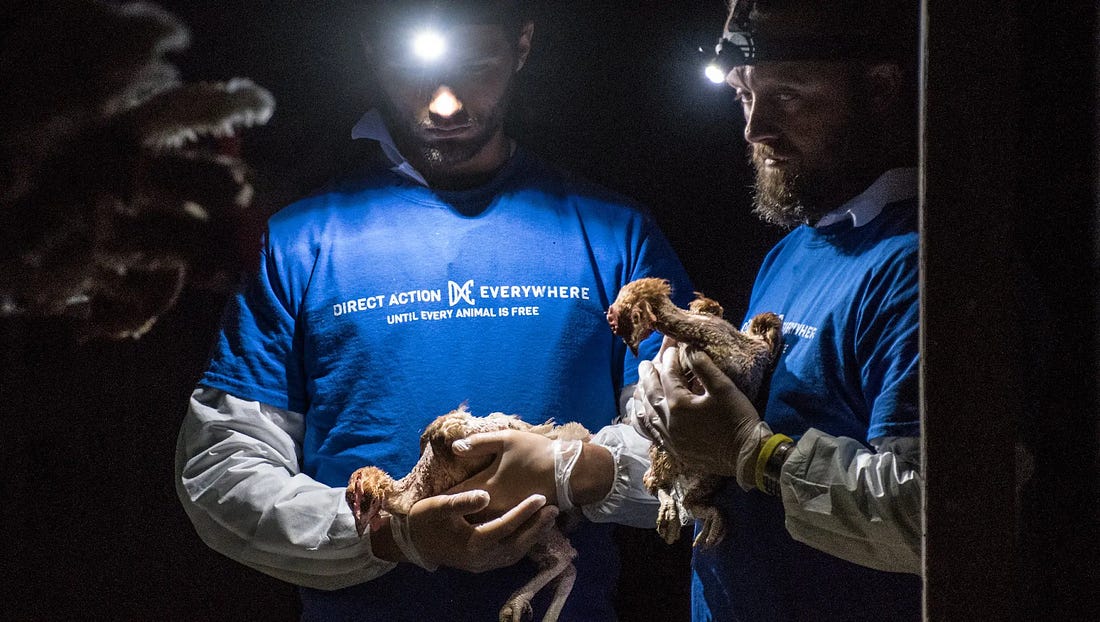|
In 2016, I walked into a cage-free egg farm and accomplished what was, at the time, my greatest success as an activist. I was leading an investigative team with Direct Action Everywhere (DxE), and we documented tens of thousands of birds crammed in industrial sheds, covered in feces, and (in some cases) literally being eaten alive. When we published footage from our investigation – including the open rescue of a sickly bird named Ella who had been pecked clean of feathers and was struggling to stand – the story went viral.
“Cage-free is not all it’s cracked up to be,” I wrote in the Huffington Post. Millions read that article – it was ultimately shared over 30,000 times on Facebook alone – and our investigation reached The New York Times and Washington Post. At speaking events across the nation, I blasted the shift to cage-free as fraudulent and counter-productive.
But I was wrong to condemn cage-free. Recent research shows that cannibalism and other abuses have probably decreased as the industry has learned to manage cage-free facilities. Cage-free campaigns, moreover, have seen enormous momentum, going from 12% of the US market in 2016 to nearly 40% by the end of 2024; in terms of influence on the industry, it is likely the most successful campaign in animal rights history. In contrast, the vegan movement continues to stall, sowing doubt in the effectiveness of more radical, “abolitionist” messaging. One would have to be willfully ignorant to miss these developments.
But the most important reason I was wrong had nothing to do with the effectiveness of cage-free campaigns. Rather, I was wrong because I failed to realize the divisiveness of my messaging. Some of the most brilliant advocates in the nation, such as my friend Bruce (formerly PETA, then at Farm Sanctuary), had been working on cage-free campaigns for many years. My supposed “success” was attacking theirs. The result was a movement divided and demoralized.
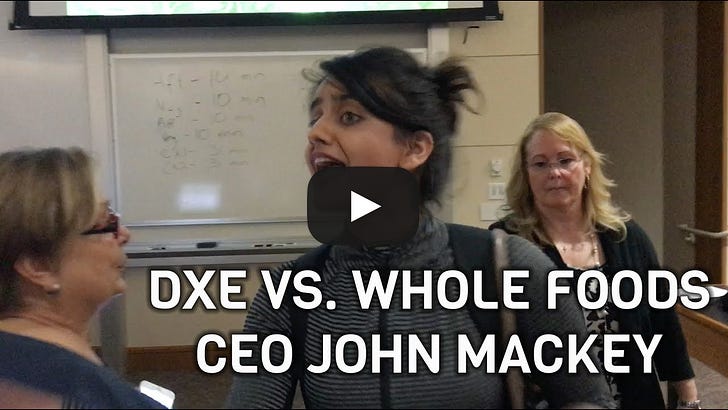
Activists disrupted an event organized by Stanford students where Bruce was speaking with Whole Foods CEO John Mackey about the merits of veganism. In retrospect, the protest was not worth endangering my relationship with Bruce.
On the abolitionist side, activists who were part of the DxE network shouted down the president of the Humane Society of the United States (one of the primary organizations pushing cage-free) at an event in 2016. This led to not just frustrated calls to me from friends at HSUS but infighting within DxE, as our organizers argued about whether the disruption was justified. On the welfare side, a major donor asked the renowned philosopher Peter Singer whether he should fund an effort to destroy DxE. Singer, to his credit, told him that would be crazy, but for many years, animal welfare people seemed afraid to even speak to me. Infighting of this sort distracted us from our mission – helping the animals – and undermined the scalable cooperation that is the hallmark of effective movements.
And I was partly to blame. Even if I had been completely right about the facts on cage-free, I was completely wrong in my approach. What should I have done differently?
For one, I could have used disagreement as an opportunity to learn, rather than condemn. This is what Ajeya Cotra and Lewis Bollard at Open Philanthropy (a prominent funder of cage-free campaigns) did in response to my critique. They dug deeper into the evidence – identifying important new data that I was not familiar with, which showed improvements at cage-free farms – and the entire movement became smarter as a result.
For another, I could have focused on strategic collaboration, rather than conflict. For example, cage-free campaigns presented opportunities for abolitionists like me to show that even “humane” farms are cruel. “Bruce has worked so effectively to make these farms more humane,” I could have said. “And yet they are still cruel. What does that tell us about the inherent ethics of treating animals like things?” Conversely, pressure from abolitionists should have allowed welfare advocates to push for greater accountability. “You need to raise and enforce your standards,” Bruce could have said. “Or you’ll deal with people like Wayne.” Differing theories of change can have a ratchet effect, pushing society up from one level to the next, if activists choose collaboration over conflict.
My most important lesson from the fight over cage-free, however, is that relationships are more important than ideology. I didn’t reach out to people like Bruce or Lewis before penning the viral piece condemning their work. That was a mistake. A growing body of research shows that it is often not the ideological rectitude of our ideas that creates change, or the persuasiveness of our advocates, but the strength of our relationships. For the sake of those relationships, I owed people like Bruce and Lewis at least a conversation before I went so hard in a major publication attacking cage-free campaigns. (This is, in fact, what the folks at Animal Rising in the UK did last year before publishing their groundbreaking investigation of the RSPCA animal welfare scheme. They made extensive efforts to dialogue with welfare groups, and the UK movement is more united as a result.)
There is a personal element to this, too. Our relational health, as the psychologist and animal advocate Melanie Joy argues, can make or break our individual health. It’s hard to be a functioning person when you are constantly attacking the people around you. In contrast, research shows that we are at our personal best when we build up the people around us.
In today’s bitter, polarized world, it has never been more important to do that. Our society is racked by conflicts, and so too is our movement. But even when there is fierce disagreement, I know that there are things for me to learn from people like Bruce and Ajeya and Lewis. There are opportunities to collaborate. And there are relationships to build.
I thought my success in 2016 came from attacking the folks who work on cage-free. But I was wrong. My greatest success came from becoming their friends.
What’s up this week?
The Debates that Shake the Movement at AVA (May 15 at 5 pm). Lewis Bollard and I will be having a friendly discussion about cage-free eggs – and the other debates that shake the movement – at the Animal and Vegan Advocacy Summit in Los Angeles on Thursday, May 15 at 5 pm. My views have shifted on cage-free eggs, but there is still significant disagreement. (Stay tuned for an updated assessment.) More broadly, there are a number of other issues dividing the movement, and Lewis and I are planning to exercise our muscle for constructive debate. I hope you’ll join us!
Defending Direct Action at AVA (May 17 at 5 pm). I’ll also be on a panel titled Defending Direct Action with constitutional litigator Prof. Justin Marceau on Saturday, May 17 at 5 pm. We’ll be sharing some important updates – including two new lawsuits filed against animal rights activists – and discussing one of the most important strategies for social movements: making repression backfire.
A Must Read Legal Perspective. Speaking of impressive legal work, Mariann Sullivan recently published a piece on open rescue in one of the nation’s top legal journals, the Cornell Law Review. Honestly, this is the best thing that has been written on the legal and political theories behind open rescue. The piece also serves as a memorial for one of the leading figures in animal law, Prof. Sherry Colb, who tragically passed away from cancer in 2022, leaving a husband and two daughters. Go give it a read.
An Opportunity to Become a Vegan Leader. Main Street Vegan Academy has been training and certifying Vegan Lifestyle Coaches and Educators since 2012 – and has passed along an offer for folks to join the program at a discount. The program is live on Zoom in real time. This means that you'll get up close and personal with their fabulous faculty, which includes the inimitable Victoria Moran. Victoria has provided spiritual grounding for countless activists, including me, for years. Don’t hesitate to reach out to Main Street Vegan (or me) if you want to take advantage of this offer.
Some Other Appearances.
I spoke at the Vegan and Animal Rights Conference on How the ‘Theft’ of Two Piglets Shut Down America's Largest Factory Farm. This was one of the most fun crowds I’ve spoken to in years!
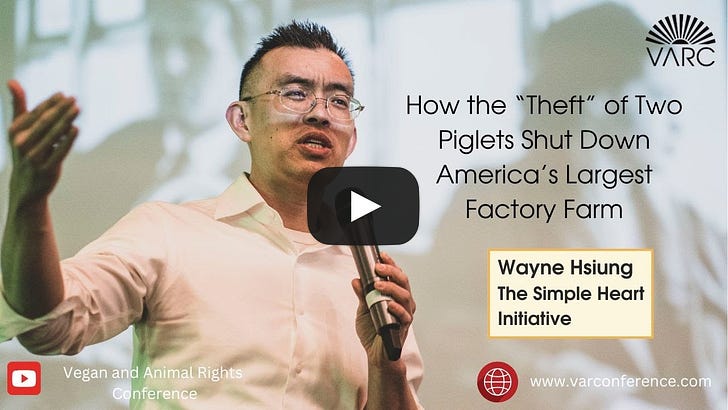
I did an Ask Me Anything with Animal Activism Collective. Things got real. So be warned.
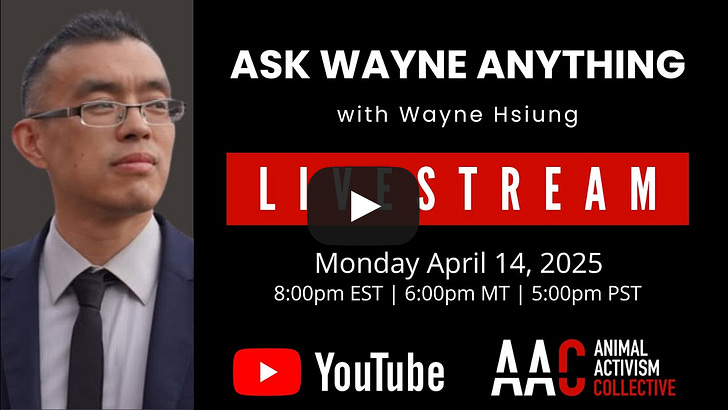
And for those who are interested in the intersections between direct action and spiritual life, I was on the Compassion Consortium service to discuss how faith informs my activism.
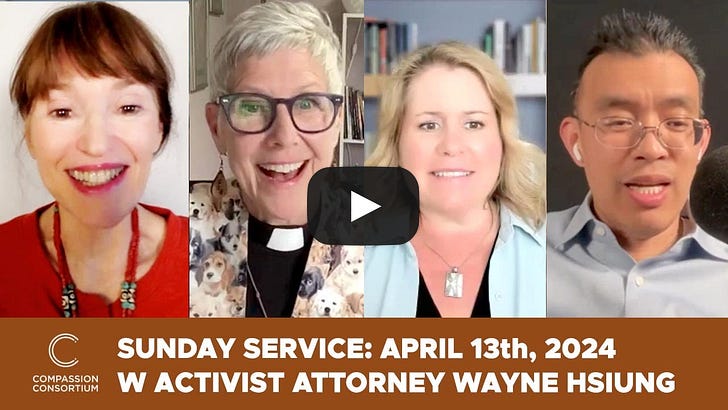
That’s all for the week! But note I’ve been updating the Substack much more frequently with short pieces that don’t go out by email. I’m shooting to do this around 5 times a week!
Thank you for reading The Simple Heart! To help us reach more people, become a donor today.
